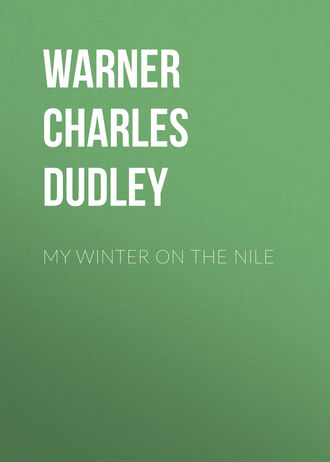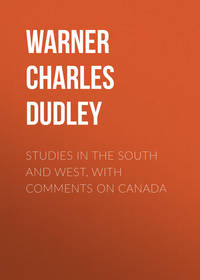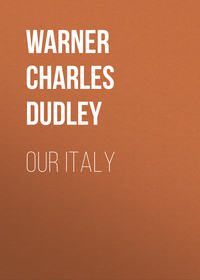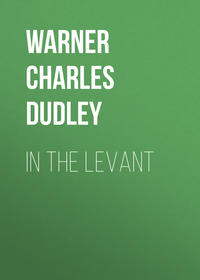 полная версия
полная версияMy Winter on the Nile
The last day of March has come. It is time to depart. Even the harem will soon be going out of town. We have remained in the city long enough to imbibe its atmosphere; not long enough to wear out its strangeness, nor to become familiar with all objects of interest. And we pack our trunks with reluctance, in the belief that we are leaving the most thoroughly Oriental and interesting city in all the East.
CHAPTER XXXVI.—BY THE RED SEA
A GENTLEMAN started from Cairo a few days before us, with the avowed purpose of following in the track of the Children of Israel and viewing the exact point where they crossed the Red Sea. I have no doubt that he was successful. So many routes have been laid out for the Children across the Isthmus, that one can scarcely fail to fall into one of them. Our purpose was merely to see Suez and the famous Sea, and the great canal of M. Lesseps; not doubting, however, that when we looked over the ground we should decide where the Exodus must have taken place.
The old direct railway to Suez is abandoned; the present route is by Zagazeeg and Ismailia—a tedious journey, requiring a day. The ride is wearisome, for the country is flat and presents nothing new to one familiar with Egyptian landscapes. The first part of the journey is, however, enlivened by the company of the canal of Fresh Water, and by the bright verdure of the plain which the canal produces. And this luxuriant vegetation continues until you come to the still unreclaimed desert of the Land of Goshen. Now that water can be supplied it only needs people to make this Land as fat as it was in the days of the Israelites.
Some twenty miles from Cairo we pass near the so-called Mound of the Jew, believed to be the ruins of the city of Orion and the temple built by the high priest Onias in the reign of Ptolemy Philometer and Cleopatra, as described by Josephus. The temple was after the style of that at Jerusalem. This Jewish settlement was made upon old Egyptian ruins; in 1870 the remains of a splendid temple of the time of Rameses II. were laid open. The special interest to Biblical scholars of this Jewish colony here, which multiplied itself and spread over considerable territory, is that its establishment fulfilled a prophesy of Isaiah (xix, 19, etc.); and Onias urged this prophesy, in his letter to the Ptolemy, asking permission to purge the remains of the heathen temple in the name of Heliopolis and to erect there a temple to Almighty God. Ptolemy and Cleopatra replied that they wondered Onias should desire to build a temple in a place so unclean and so full of sacred animals, but since Isaiah foretold it, he had leave to do so. We saw nothing of this ancient and once flourishing seat of Jewish enterprise, save some sharp mounds in the distance.
Nor did we see more of the more famous city of Bubastis, where was the temple to Pasht, the cat or lioness-headed deity (whom Herodotus called Diana), the avenger of crimes. According to Herodotus, all the cats of Egypt were embalmed and buried in Bubastis. This city was the residence of the Pharaoh Sheshonk I. (the Shishak of the Bible) who sacked Jerusalem, and it was at that time the capital of Egypt. It was from here, on the Bubastic (or Pelusiac) branch of the Nile, that the ancient canal was dug to connect with the Heroôpolite Gulf (now the Bitter Lakes), the northernmost arm of the Red Sea at that date; and the city was then, by that fresh-water canal, on the water-way between the Red Sea and the Mediterranean. But before the Christian era the Red Sea had retired to about its present limit (the Bitter Lakes being cut off from it), and the Bubastic branch of the Nile was nearly dried up. Bubastis and all this region are now fed by the canal which leaves the Nile at Cairo and runs to Ismailia, and thence to Suez. It is a startling thought that all this portion of the Delta, east, and south, and the Isthmus depend for life upon the keeper of the gate of the canal at Cairo. If we were to leave the train here and stumble about in the mounds of Bubastis, we should find only fragments of walls, blocks of granite, and a few sculptures.
At the Zagazeeg station, where there is a junction with the Alexandria and Cairo main line, we wait some time, and find very pleasant the garden and the picturesque refreshment-house in which our minds are suddenly diverted from ancient Egypt by a large display of East Indian and Japanese curiosities on sale.
From this we follow, substantially, the route of the canal, running by villages and fertile districts, and again on the desert’s edge. We come upon no traces of the Israelites until we reach Masamah, which is supposed to be the site of Rameses, one of the treasure-cities mentioned in the Bible, and the probable starting-point of the Jews in their flight. This is about the center of the Land of Goshen, and Rameses may have been the chief city of the district.
If I knew exactly the route the Israelites took, I should not dare to disclose it; for this has become, I do not know why, a tender subject. But it seems to me that if the Jews were assembled here from the Delta for a start, a very natural way of exit would have been down the Wadee to the head of the Heroopolite Gulf, the route of the present and the ancient canal. And if it should be ascertained beyond a doubt that Sethi I. built as well as planned such a canal, the argument of probability would be greatly strengthened that Moses led his vast host along the canal. Any dragoman to-day, desiring to cross the Isthmus and be beyond pursuit as soon as possible, supposing the condition of the country now as it was at the time of the Exodus, would strike for the shortest line. And it is reasonable to suppose that Moses would lead his charge to a point where the crossing of the sea, or one of its arms, was more feasible than it is anywhere below Suez; unless we are to start with the supposition that Moses expected a miracle, and led the Jews to a spot where, apparently, escape for them was hopeless if the Egyptian pursued. It is believed that at the time of the Exodus there was a communication between the Red Sea and the Bitter Lakes—formerly called Heroopolite Gulf—which it was the effort of many rulers to keep open by a canal. Very anciently, it is evident, the Red Sea extended to and included these lakes; and it is not improbable that, in the time of Moses, the water was, by certain winds, forced up to the north into these lakes: and again, that, crossings could easily be made, the wind being favorable, at several points between what is now Suez and the head of the Bitter Lakes. Many scholars make Cha-loof, about twelve miles above Suez the point of passage.
We only touch the outskirts of Ismailia in going on to Suez. Below, we pass the extensive plantation and garden of the Khedive, in which he has over fifty thousand young trees in a nursery. This spot would be absolute desert but for the Nile-water let in upon it. All day our astonishment has increased at the irrigation projects of the Viceroy, and his herculean efforts to reclaim a vast land of desert; the enlarging of the Sweet-Water Canal, and the gigantic experiments in arboriculture and agriculture.
We noticed that the Egyptian laborers at work with the wheelbarrows (instead of the baskets formerly used by them) on the enlargement of the canal, were under French contractors, for the most part. The men are paid from a franc to a franc and a quarter per day; but they told us that it was very difficult to get laborers, so many men being drafted for the army.
At dark we come in sight of the Bitter Lakes, through which the canal is dredged; we can see vessels of various sorts and steamers moving across them in one line; and we see nothing more until we reach Suez. The train stops “at nowhere,” in the sand, outside the town. It is the only train of the day, but there are neither carriages nor donkeys in waiting. There is an air about the station of not caring whether anyone comes or not. We walk a mile to the hotel, which stands close to the sea, with nothing but a person’s good sense to prevent his walking off the platform into the water. In the night the water looked like the sand, and it was only by accident that we did not step off into it; however, it turned out to be only a couple of feet deep.
The hotel, which I suppose is rather Indian than Egyptian, is built round a pleasant court; corridors and latticed doors are suggestive of hot nights; the servants and waiters are all Hindoos; we have come suddenly in contact with another type of Oriental life.
Coming down from Ismailia, a friend who was with us had no ticket. It was a case beyond the conductor’s experience; he utterly refused backsheesh and he insisted on having a ticket. At last he accepted ten francs and went away. Looking in the official guide we found that the fare was nine francs and a quarter. The conductor, thinking he had opened a guileless source of supply, soon returned and demanded two francs more. My friend countermined him by asking the return of the seventy-five centimes overpaid. An amusing pantomime ensued. At length the conductor lowered his demand to one franc, and, not getting that, he begged for backsheesh. I was sorry to have my high ideal of a railway-conductor, formed in America, lowered in this manner.
We are impatient above all things for a sight of the Red Sea. But in the brilliant starlight, all that appears is smooth water and a soft picture of vessels at anchor or aground looming up in the night. Suez, seen by early daylight, is a scattered city of some ten thousand inhabitants, too modern and too cheap in its buildings to be interesting. There is only a little section of it, where we find native bazaars, twisting streets, overhanging balconies, and latticed windows. It lies on a sand peninsula, and the sand-drifts close all about it, ready to lick it up, if the canal of fresh water should fail.
The only elevation near is a large mound, which may be the site of the fort of ancient Clysma, or Gholzim as it was afterwards called—the city believed to be the predecessor of Suez. Upon this mound an American has built, and presented to the Khedive, a sort of châlet of wood—the whole transported from America ready-made, one of those white, painfully unpicturesque things with two little gables at the end, for which our country is justly distinguished. Cheap. But then it is of wood, and wood is one of the dearest things in Egypt. I only hope the fashion of it may not spread in this land of grace.
It was a delightful morning, the wind west and fresh. From this hillock we commanded one of the most interesting prospects in the world. We looked over the whole desert-flat on which lies the little town, and which is pierced by an arm of the Gulf that narrows into the Suez canal; we looked upon two miles of curved causeway which runs down to the docks and the anchoring place of the steam-vessels—there cluster the dry-docks, the dredges, the canal-offices, and just beyond the shipping lay; in the distance we saw the Red Sea, like a long lake, deep-green or deep-blue, according to the light, and very sparkling; to the right was the reddish limestone range called Gebel Attâka—a continuation of the Mokattam; on the left there was a great sweep of desert, and far off—one hundred and twenty miles as the crow flies—the broken Sinai range of mountains, in which we tried to believe we could distinguish the sacred peak itself.
I asked an intelligent railway official, a Moslem, who acted as guide that morning, “What is the local opinion as to the place where the Children of Israel crossed over?”
“The French,” he replied, “are trying to make it out that it was at Chaloof, about twenty miles above here, where there is little water. But we think it was at a point twenty miles below here; we must put it there, or there wouldn’t be any miracle. You see that point, away to the right? That’s the spot. There is a wady comes down the side.”
“But where do the Christians think the crossing was?”
“Oh, here at Suez; there, about at this end of Gebel Attâka.” The Moslems’ faith in the miraculous deliverance is disturbed by no speculations. Instead of trying to explain the miracle by the use of natural causes, and seeking for a crossing where the water might at one time have been heaped and at another forced away by the winds, their only care is to fix the passage where the miracle would be most striking.
After breakfast and preparations to visit Moses’ Well, we rode down the causeway to the made land where the docks are. The earth dumped here by the dredging-machines (and which now forms solid building ground), is full of a great variety of small sea-shells; the walls that enclose it are of rocks conglomerate of shells. The ground all about gives evidence of salt we found shallow pools evaporated so that a thick crust of excellent salt had formed on the bottom and at the sides. The water in them was of a decidedly rosy color, caused by some infusorial growth. The name, Red Sea, however, has nothing to do with this appearance, I believe.
We looked at the pretty houses and gardens, the dry-dock and the shops, and the world-famous dredges, without which the Suez Canal would very likely never have been finished. These enormous machines have arms or ducts, an iron spout of semi-elliptical form, two hundred and thirty feet long, by means of which the dredger working in the center of the channel could discharge its contents over the bank. One of them removed, on an average, eighty thousand cubit yards of soil a month. A faint idea may be had of this gigantic work by the amount of excavation here, done by the dredgers, in one month,—two million seven hundred and sixty-three thousand cubic yards. M. de Lesseps says that if this soil were “laid out between the Arc de Triomphe and the Place de la Concorde, it would cover the entire length and breadth of the Champs Elysées, a distance equal to a mile and a quarter, and reach to the top of the trees on either side.”
At the pier our felucca met us and we embarked and sailed into the mouth of the canal. The channel leading to it is not wide, and is buoyed at short intervals. The mouth of the canal is about nine hundred feet wide and twenty-seven deep,5 and it is guarded on the east by a long stone mole projected from the Asiatic shore. There is considerable ebb and flow of the tide in this part of the canal and as far as the Bitter Lakes, where it is nearly all lost in the expanse, being only slightly felt at Lake Timsah, from which point there is a slight uniform current to the Mediterranean.
From the canal entrance we saw great ships and steamboats in the distance, across the desert, and apparently sailing in the desert; but we did not follow them; we turned, and crossed to the Asiatic shore. We had brought donkeys with us, and were soon mounted for a scrambling gallop of an hour and a half, down the coast, over level and hard sand, to Moses’ Well. The air was delicious and the ride exhilarating. I tried to get from our pleasant Arab guide, who had a habit of closing one eye, what he thought of the place of the passage.
“Where did the Children of Israel cross?”
“Over dat mountain.”
“Yes, but where did they cross the Sea?”
“You know Moses?”
“Yes, I know Moses. Where did he cross?”
“Well,” closing his eye very tight, “him long time ago, not now. He cross way down there, can’t see him from here.”
On the way we passed the white tents of the Quarantine Station, on our right by the shore, where the caravan of Mecca pilgrims had been detained. We hoped to see it: but it had just set out on its desert march further inland. It was seen from Suez all day, straggling along in detachments, and at night camped about two miles north of the town. However, we found a dozen or two of the pilgrims, dirty, ragged, burned by the sun, and hungry, lying outside the enclosure at the wells.
The Wells of Moses (or Ain Moosa, “Moses’ Well,” in the Arabic) are distant a mile or more from the low shore, and our first warning of nearness to them was the appearance of some palms in a sandy depression. The attempt at vegetation is rather sickly, and the spot is but a desolate one. It is the beginning of the route to Mount Sinai, however, and is no doubt a very welcome sight to returning pilgrims. Contrast is everything; it is contrast with its surroundings that has given Damascus its renown.
There are half a dozen of these wells, three of which are some fifteen to twenty feet across, and are in size and appearance very respectable frog-ponds. One of them is walled with masonry, evidently ancient, and two shadoofs draw water from it for the garden, an enclosure of an acre, fenced with palm-matting. It contains some palms and shrubs and a few vegetables. Here also is a half-deserted house, that may once have been a hotel and is now a miserable trattoria without beds. It is in charge of an Arab who lives in a hut at the other side of the garden, with his wife and a person who bore the unmistakable signs of being a mother-in-law. The Arab made coffee for us, and furnished us a table, on which we spread our luncheon under the verandah. He also gave us Nile-water which had been brought from Suez in a cask on camel-back; and his whole charge was only one bob (a shilling) each. I mention the charge, because it is disenchanting in a spot of so much romance to pay for your entertainment in “bobs.”
We had come, upon what I may truly call a sentimental pilgrimage, on account of Moses and the Children of Israel. If they crossed over from Mount Attâka yonder, then this might be the very spot where Miriam sang the song of triumph. If they crossed at Chaloof, twenty miles above, as it is more probable they did, then this might be the Marah whose bitter waters Moses sweetened for the time being; the Arabs have a tradition that Moses brought up water here by striking the ground with his stick. At all events, the name of Moses is forever attached to this oasis, and it did not seem exactly right that the best well should be owned by an Arab who makes it the means of accumulating bobs. One room of the house was occupied by three Jews, traders, who establish themselves here a part of the year in order to buy, from the Bedaween, turquoise and antiquities which are found at Mount Sinai. I saw them sorting over a peck of rough and inferior turquoise, which would speedily be forwarded to Constantinople, Paris, and London. One of them sold me a small intaglio, which was no doubt of old Greek workmanship, and which he swore was picked up at Mount Sinai. There is nothing I long more to know, sometimes, than the history of wandering coins and intaglios which we see in the Orient.
It is not easy to reckon the value of a tradition, nor of a traditional spot like this in which all the world feels a certain proprietorship. It seemed to us, however, that it would be worth while to own this famous Asiatic well; and we asked the owner what he would take for it. He offered to sell the ranche for one hundred and fifty guineas; this, however, would not include the camel,—for that he wanted ten pounds in addition; but it did include a young gazelle, two goats, a brownish-yellow dog, and a cat the color of the sand. And it also comprised, in the plantation, a few palms, some junipers, of the Biblical sort, the acacia or “shittah” tree of the Bible, and, best of all, the large shrub called the tamarisk, which exudes during two months in the year a sweet gummy substance that was the “manna” of the Israelites.
Mother-in-law wore a veil, a string of silver-gilt imitation coins, several large silver bracelets, and a necklace upon which was sewed a string of small Arabic gold coins. As this person more than anyone else there represented Miriam,—not being too young,—we persuaded her to sell us some of the coins as mementoes of our visit. We could not determine, as I said, whether this spot is associated with Miriam or whether it is the Marah of bitter waters; consequently it was difficult to say what our emotions should be. However, we decided to let them be expressed by the inscription that a Frenchman had written on a wall of the house, which reads:—Le cour me palpitait comme un amant qui revoit sa bien aimée.
There are three other wells enclosed, but unwalled, the largest of which—and it has near it a sort of loggia or open shed where some dirty pilgrims were reposing—is an unsightly pond full of a green growth of algæ. In this enclosure, which contains two or three acres, are three smaller wells, or natural springs, as they all are, and a considerable thicket of palms and tamarisks. The larger well is the stronger in taste and most bitter, containing more magnesia. The water in all is flat and unpleasant, and not enlivened by carbonic acid gas, although we saw bubbles coming to the surface constantly. If the spring we first visited could be aerated, it would not be worse to drink than many waters that are sought after. The donkeys liked it; but a donkey likes any thing. About these feeble plantations the sand drifts from all directions, and it would soon cover them but for the protecting fence. The way towards Sinai winds through shifting sand-mounds, and is not inviting.
The desert over which we return is dotted frequently with tufts of a flat-leafed, pale-green plant, which seem to thrive without moisture; and in the distance this vegetation presents an appearance of large shrub growth, greatly relieving the barrenness of the sand-plain. We had some fine effects of mirage, blue lakes and hazy banks, as of streams afar off. When we reached an elevation that commanded a view of the indistinct Sinai range, we asked the guide to point out to us the “rosy peaks of Mount Sinai” which Murray sees from Suez when he is there. The guide refused to believe that you can see a rosy peak one hundred and twenty miles through the air, and confirmed the assertion of the inhabitants of Suez that Mount Sinai cannot be seen from there.
On our return we overtook a caravan of Bedaween returning from the holy mount, armed with long rifles, spears, and huge swords, swinging along on their dromedaries,—a Colt’s revolver would put the whole lot of braggarts to flight. One of them was a splendid specimen of manhood, and we had a chance to study his graceful carriage, as he ran besides us all the way; he had the traditional free air, a fine face and well-developed limbs, and his picturesque dress of light-blue and buff, somewhat in rags, added to his attractions. It is some solace to the traveler to call these fellows beggars, since he is all the time conscious that their natural grand manner contrasts so strongly with the uncouthness of his more recent and western civilization.
Coming back into Suez, from this journey to another continent, we were stopped by two customs-officers, who insisted upon searching our lunch-basket, to see if we were attempting to smuggle anything from Asia. We told the guide to give the representative of his Highness, with our compliments, a hard-boiled egg.
Suez itself has not many attractions. But we are much impressed at the hotel by the grave Hindoo waiters, who serve at table in a close-fitting habit, like the present extremely narrow gown worn by ladies, and ludicrous to our eyes accustomed to the flowing robes of the Arabs. They wear also, while waiting, broad-brimmed, white, cork hats, slightly turned up at the rim. It is like being waited on by serious genii. These men also act as chambermaids. Their costume is Bengalee, and would not be at all “style” in Bombay.
Suez is reputed a healthful place, enjoying both sea and desert air, free from malaria, and even in summer the heat is tempered. This is what the natives say. The English landlady admits that it is very pleasant in winter, but the summer is intensely hot, especially when the Khamseen, or south wind, blows—always three days at a time—it is hardly endurable; the thermometer stands at 110° to 1140 in the shaded halls of the hotel round the court. It is unsafe for foreigners to stay here more than two years at a time; they are certain to have a fever or some disease of the liver.
The town is very much depressed now, and has been ever since the opening of the canal. The great railway business fell off at once, all freight going by water. Hundreds of merchants, shippers and forwarders are out of employment. We hear the Khedive much blamed for his part in the canal, and people here believe that he regrets it. Egypt, they say, is ruined by this loss of trade; Suez is killed; Alexandria is ruined beyond reparation, business there is entirely stagnant. What a builder and a destroyer of cities has been the fluctuation of the course of the East India commerce!







